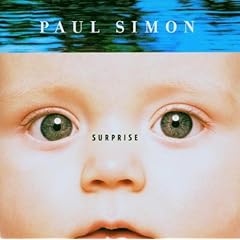Airplane reading
Back from my trip. Got out of Denver, baby, yes I did. Enjoyed nice dinners and a good time with some professional colleagues from other colleges and universities. But the true highlight was the pleasure I derived from reading almost the entire issue of the latest Rolling Stone. This issue happens to be the magazine's commemorative 35th anniversary issue. (Speaking of commemorative issues, K Jo, I haven't seen that Joe Strummer memorial issue yet. Hint, hint.) It's all about American Icons, those images -- from the Fender Stratocaster to the Harley-Davidson -- that have shaped and come to symbolize American culture. (Attention David Hopkins: there's even a cool piece on The Superhero by filmmaker Kevin Smith, who also happened to visit campus today while I was flying home from Denver, darn it.) Anyone who's a student of pop culture should purchase a copy of this issue to read, reread, and blog about. (Or, you can just blog about how I blogged about it in this post, which is really more an excuse to procrastinate on returning phone calls and cleaning spam from my email accounts than anything else.)
Most of the stories in this special issue were written by guest contributors -- Bill Moyers on The Flag, Cameron Crowe (who I suppose isn't really a guest contributor) on The Backstage Pass, Ritalin/coke addict/author Elizabeth Wurtzel on society's addiction to The Pill (the pill, yes, but also all manner of pharmaceuticals -- and some of them are quite good. Wurtzel's essay on pharmaceuticals was fascinating, Cameron Crowe wrote with his usual understated humor and irony, and Jay Leno's insights on the Ford Mustang were more interesting than I suspected. Other pieces didn't live up to their billing. The lovely artwork couldn't keep Courtney Love's piece on The Blonde Bombshell from simply bombing, and Blink-182's Mark Hoppus, who wrote the piece on Homer Simpson, comes up with an interesting thought or two -- that Homer is "Everyman" isn't exactly revelation -- but mostly gives us silly lines like this one: "No matter what area of the country you live in, what kind of music you listen to, everybody loves The Simpsons, because they're the all-American family: They're yellow and they have four fingers." I guess you can get away with that sort of thing when you're a rock star and you're writing for a rock music mag.
My favorite piece thus far may come as a suprise to some of you. But Marilyn Manson's piece on The Dead Rock Star as American icon is terrific. He manages to capture the mystique of the stars who die in their prime, citing Jesus as the archetype for the Dead Rock Star mythology.
Jesus was the first rock star. The cross is the biggest, greatest piece of merchandise in history, bigger than any concert T-shirt. And Jesus was the first dead rock star. Like Jim Morrison and Kurt Cobain and Jimi Hendrix, he became immortal by dying. A dead rock star becomes perfect, and he'll be that forever. He'll never change, never get old, never turn into something less great than at his peak, at the moment of his death.
I read that opening paragraph and though, man, I wish I could have written that!
Of course, for as long as I've been interested in writing and rock music, I've always wanted to write for Rolling Stone, and I've always felt slight pangs of jealousy whenever I pick up an issue and see what's been written there. I could do that, I smugly say to myself.
The other interesting thing about this special issue is that Rolling Stone seems oddly comfortable with itself as it ages into mid-thirties. It seems so odd to me that this magazine is now such an institution. Perhaps it's the world that has changed more than the publication. It seems RS lost its edginess long ago; maybe it's content cranking out music and pop culture news for aging Boomers and Xers to read and reflect on. This issue did have a nice, nostalgic quality to it, but when I think of "cutting-edge rock music publication," nostalgia isn't top of mind.
:: Andrew 16:51 + ::
...
bloggedy blog
bloggedy blog recommends
bloggedy pod (my podcast page)
Independent hotels
in Missouri
eMusic's Power Charts: The Most Interactive Music Charts Online.
In rotation
What I've been listening to lately. Click album cover or hyperlink to hear track samples and learn more.
 Rickie Lee Jones, Sermon on Exposition Boulevard
Rickie Lee Jones, Sermon on Exposition Boulevard
 Patty Griffin, Children Running Through
Patty Griffin, Children Running Through
 Of Montreal, Hissing Fauna, Are You the Destroyer?
Of Montreal, Hissing Fauna, Are You the Destroyer?
 Field Music, Tones of Town
Field Music, Tones of Town
 De Bossen, The Girl Collection
De Bossen, The Girl Collection
 Cold War Kids, Robbers & Cowards
Cold War Kids, Robbers & Cowards

Frida Hyvonen, Until Death Comes

Tratore Basics Vol. 2, Novo Rock Brazil
 Yusuf: An Other Cup
Yusuf: An Other Cup
 The Beatles: Love
The Beatles: Love

The French Kicks: Two Thousand

The Blow: Paper Television

Freedom Haters Unite! A Bloodshot Records Sampler

Swan Lake: Beast Moans

Prototypes: Prototypes

Scanners: Violence Is Golden

Voxtrot: Mothers, Sisters, Daughters & Wives

Voxtrot: Your Biggest Fan

Macon Greyson: Translate

The Evens: Get Evens

Veruca Salt: Veruca Salt IV
 Bob Dylan: Modern Times
Bob Dylan: Modern Times

Pink Tuscadero: Look Your Best

Leigh Nash: Blue on Blue

Yo La Tengo: I Am Not Afraid of You and I Will Beat Your Ass

The Hold Steady: Boys and Girls in America

Bobby Bare Jr.: The Longest Meow"

The Be Good Tanyas: Hello Love

The Lemonheads: The Lemonheads

Ben Kweller: Ben Kweller

The Pipettes: We Are the Pipettes
 Paul Simon: Surprise
Paul Simon: Surprise

Exene Cervenka and the Original Sinners: Sev7en
 Johnny Cash: American V: A Hundred Highways
Johnny Cash: American V: A Hundred Highways

The John Doe Thing: For the Best of Us

The Fondas: Runaway Bombshell

Buzzcocks: Flat Pack Philosophy

Asobi Seksu: Citrus

Tapes 'n Tapes: The Loon

Various Artists: 2006 Pitchfork Music Festival Sampler (24 free tracks)

The Futureheads: News and Tributes

The Bottle Rockets: Zoysia

Camera Obscura: Let's Get Out of This Country

Art Brut: Bang Bang Rock & Roll

Drive By Truckers: A Blessing and a Curse

The Raconteurs: Broken Boy Soldiers

Belle and Sebastian: The Life Pursuit

Cat Power: The Greatest
bloggedy tags
from our sponsors
for your viewing pleasure
24x7
rocketboom
the Richard Show



 Simon Dawes,
Simon Dawes,